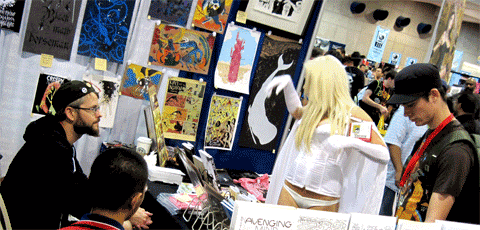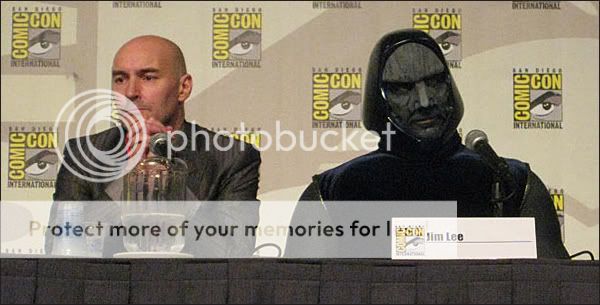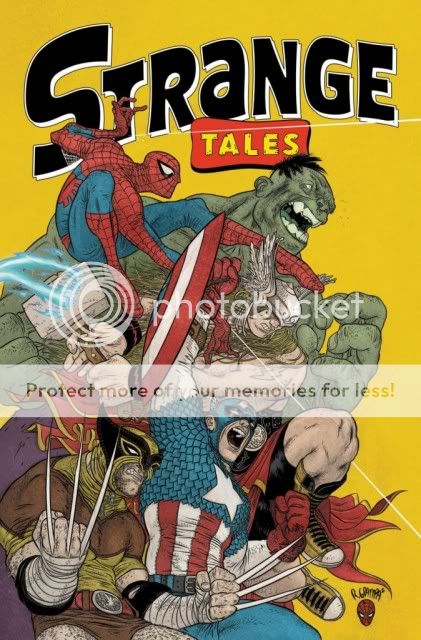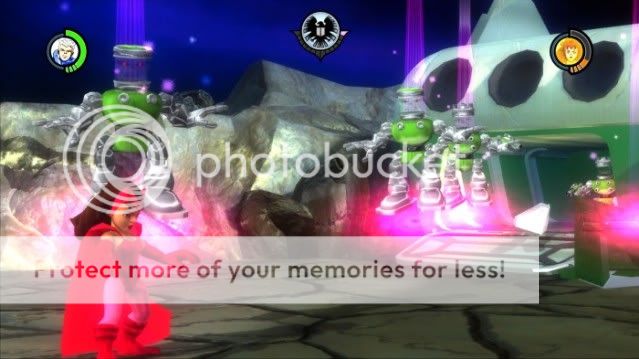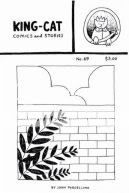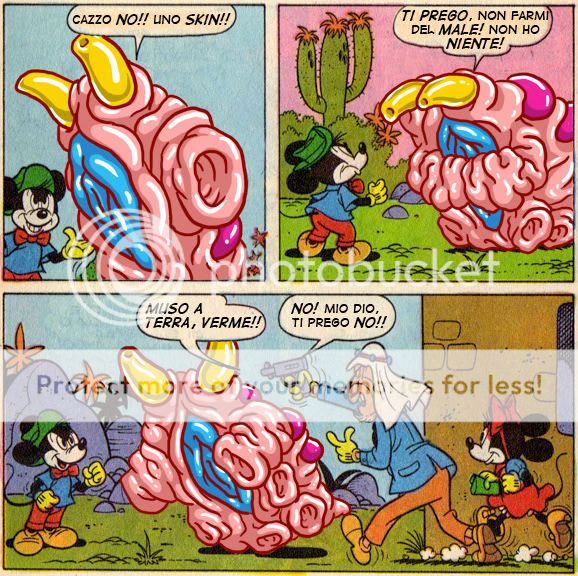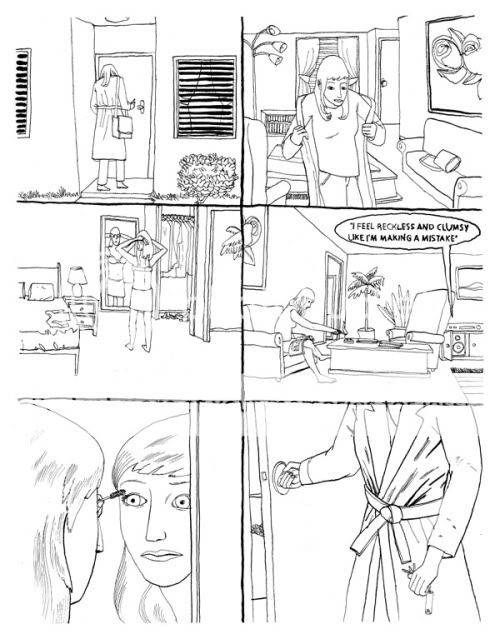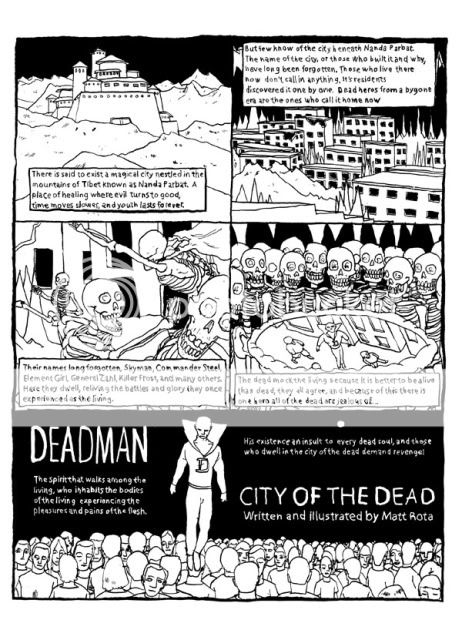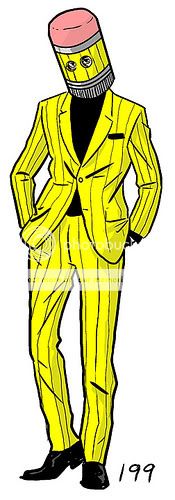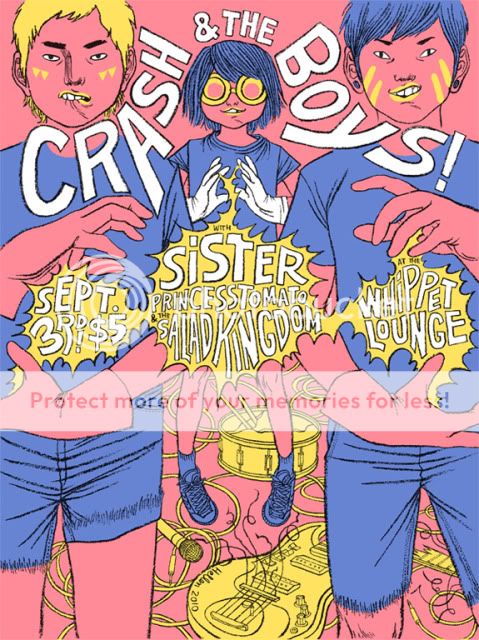* And now: Morrisonia!
* You heard it from me at Robot 6 first: A Joe the Barbarian movie is in development with the folks who made Clash of the Titans.
* Three bits of good Grant Morrison/Frank Quitely news I missed/forgot to mention: Absolute We3 is on the way with ten new pages, Morrison is confident about the prospects for a collected Flex Mentallo, and Dwayne McDuffie is writing an animated adaptation of All-Star Superman.
* Sea Guy Eternal is on the way as well.
* IGN talks to Morrison about Batman Inc. It sounds like fun, which is probably something that needs to be said more often w/r/t Morrison’s Bat-books. They’re fun! Meanwhile, given my increasing interest in the narrative potential for the non-narrative tropes of videogames (all praises due to Scott Pilgrim), I’m obviously loving this quote:
So many comics are still inspired by Hollywood movies, (many of which are now inspired, in turn, by comics in that pop-will- eat-itself way), and by extension a kind of approach to narrative which dates back to Aristotle’s Poetics and the fundamentals of Greek Drama, almost two and a half thousand years ago, in the name of our dear lords Hermes and Zeus Almighty!
It occurred to me, immersed in my 50th hour of Just Cause 2, how far beyond that silent audience, proscenium arch, here’s some well-paid ‘actor’ pretending to be someone else experience we’d gone and how very timidly other forms of storytelling entertainment had reacted to the challenge of the beast in their midst, this ultimate choose your own adventure playground that in some cases simulates ‘life’ and terrain so effectively it’s like actually like going on vacation (how many gamers know the geography of Silent Hill as well as their own town? Do streets and locations from Liberty City, Panau, or Saints Row, turn up in the dreams of other gamers like they do in mine? I’ll lay odds they do. These amazing virtual environments appear in my memories as real as Chicago or London. Paris, Venice, New Delhi, Jogjakarta or any of the non-CGI cities I’ve been to.
Although many current video games are constructed on a narrative spine which follows the basic action movie hero-beats-baddie script, it’s never that aspect of the player’s interaction with the virtual environment that’s important. I know I tend to skip the cut scenes in games without losing any awareness of the arrow of narrative progression. Batman Inc. is an attempt to do a comic influenced by the storytelling structures, images, senses of scale, movement and perspective and so on that I’ve absorbed from games. The experience of actually being Batman in the Arkham Asylum game was profoundly eerie and I’d love to find a way to capture that depth of involvement and identification with the character and environment. I’m not sure how much of this I’ll be able to realise but this is where I’m beginning my thinking on what might make Batman Inc. different from other books.
* Finally, here’s another pretty great, and pretty blunt, quote from Morrison’s spotlight panel:
Me and Geoff Johns sell lots of comic books at DC, and no one’s ever said ‘Don’t do that,’ because they know it sells good. There are certain segments of fandom that say that my work is difficult, but it’s the best-selling stuff in the business and has been for 20 years. So I’m not going to change.
(Via JK Parkin and Kevin Melrose.)
* ICv2 has a few more details about the biggest story of the show, Fantagraphics’ deal with Disney to collect Floyd Gottfredson’s Mickey Mouse strip.
* Here’s a look at Top Shelf’s spotlight panel. That’s an extensive coming-soon list.
* Jesse Moynihan will send you his Comic-Con minicomic for free.
* Here’s concept art for the upcoming American Godzilla reboot. I dunno, it’s a painting of Godzilla, whoopedy dee.
* I took a look back at my coverage of last year’s Con and was interested to see which projects announced back then still haven’t seen the light of day. Rafael Grampa’s Furry Water and his AdHouse art book and Gerard Way’s Umbrella Academy: Hotel Oblivion and Killjoys top the list. Also, Geoff Johns’s All Flash series didn’t quite manifest as planned, though between Flash and Speed Force I guess we’ll see all of the intended material eventually.
* As longtime readers are no doubt aware, I’m habitually skeptical of post-Comic-Con flounce posts, like this one from Videogum’s Gabe Delahaye. In my experience they almost always stem either from wildly unrealistic expectations–like that the show should automatically lay itself out before you in the form best suited to your needs and that its failure to do so is a reflection of its shortcomings rather than yours–or from a professional mandate which requires immersion in the show’s gaudiest/most exploitative aspects or which treats it as an opportunity for cultural anthropology on nerd culture at its worst. In reality, it’s perfectly easy for a normal person, or even Eisner Award winning comics journalist Tom Spurgeon, to attend the show, even cover the show, in precisely the way they most enjoy. Yes, the show is huge, and crowded, and increasingly saturated with distasteful Hollywood types; and yes, nerd culture is an aesthetic morass in many ways these days. But whaddyagonnado? Alvin Buenaventura still had a table, Jaime and Gilbert Hernandez were available for gushing over, you could buy original art from the Beguiling, you could get limited edition He-Man toys, there was a torso-sized Infinity Gauntlet on display, Liv Tyler walked around disguised as V for Vendetta, and 130,000 people were there to enjoy the products of people’s imagination, even if some of that imagination has been commodified and stuck in flyer form into hotel bathroom mirrors. Ultimately, I’m with Matt Maxwell: “Yes, it’s coarse and crass and unforgivable, but there’s times that you find yourself stepping into a shoe that happens to fit you perfectly.” I will always self-identify as a nerd and I will always be glad that Comic-Con exists.
* In non-Con news:
* Chris Mautner takes a look at Fantagraphics’ fall/winter catalog. Moto Hagio, Dave Cooper, Los Bros Hernandez, Steve Ditko, Walt Kelly, Jacques Tardi, Johnny Ryan, Jason, David B., loads more.
* I’m never not in the mood for stories about relict African dinosaurs.
* Jason Adams liked Salt, but his and Matt Zoller Seitz’s points of comparison don’t exactly move it to the top of my to-do list.




